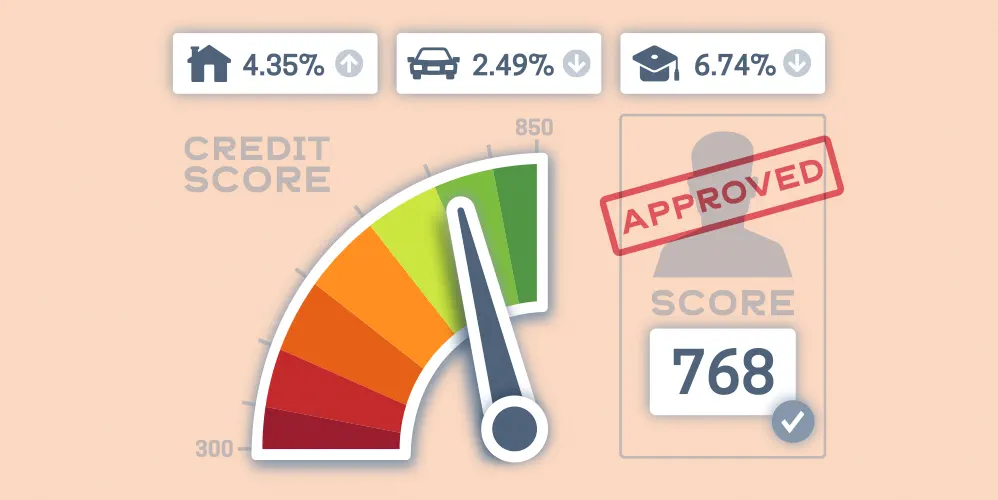
How Much Home Loan Can I Get As A Salaried Employee?
05 Jun 2023

Table of Content
Home Loan for Salaried Employee
Real estate rates are rising with every passing day. It is no longer feasible for one to purchase a home simply with the help of their savings. You need to approach a bank to take out a home loan . But lenders need to be sure that you have the capacity to repay the loan, before passing your loan. To ensure you have the repayment capacity, they take a few important factors into consideration such as your net monthly income, credit scores, and credit repayment behaviour. If you are a salaried employee thinking how much home loan I can get on my salary, you need to read this article.
The Role of Your Net Salary
The key prerequisite for a bank to sanction your loan is your salary. Banks need to be convinced that you earn enough to be able to afford the monthly EMIs. This is why your gross monthly income is the most important factor for lenders sanctioning loans. Your net (in hand) income helps the lender assess the equated monthly instalment you can afford. Let’s look at it with the help of an example.
Let’s say your age is 30 years and monthly salary is ₹60,000 but you receive a net income of ₹55,000 post deductions. In this case, the ₹55,000 becomes your net monthly income and you would be sanctioned your loan based on this amount.
Now to answer the question how much home loan I can get, let’s build on the above example. Let’s say you approach Bank of Baroda to finance your home loan. On a net monthly remuneration of ₹50,000 and above, total deductions, including proposed EMI not to exceed 65% of the Gross Monthly income as per Bank of Baroda norms for Housing Loan ,i.e. Total monthly deduction of Rs.39000/- is allowed in your case and since there is already a monthly deduction of Rs.5000/-, you are left with Rs.34000/-for the proposed Home Loan EMI. The Bank may find you eligible for a Housing Loan of Rs.44,00,000(rate of Interest taken at 8.40%(otherwise applicable as per CIBIL score of applicant), present BRLLR of bank and loan Tenure is taken as 30 years maximum Tenure offered by Bank of Baroda) if you wish to purchase a flat/plot anywhere in India. As you can see, Bank of Baroda would base your loan approval amount on following main factors: i.e. your age, your monthly income, your CIBIL score and the actual value of the property.
The Role of Your Repayment Capacity
Your net salary may answer the question how much home loan I can get on my salary but is in not the only determining factor. A high monthly income does not prove to the lender that you have the capacity to repay the loan. To this end, they conduct their own assessment of your home loan repayment capacity by looking at your bank statements. They prefer to check your typical monthly expenses, your credit card debt, your credit history and other EMIs you are paying and so on, to ensure that you are eligible for the home loan. Your monthly expense report helps lenders understand the amount of income you are left with every month after mandatory expenses and your income to debt ratio. They typically require you to have anywhere between 50%-75% income available for total deductions including your existing deductions plus EMI of proposed home loan depending upon your Income slab to calculate your eligibility for the proposed home loan. You have an option to add co-applicant in home loan who can be any of your earning close relative to enhance your loan eligibility. It is suggestible to have the co borrower as co-owner of the proposed property as well to avail Income Tax benefits available for Home Loan borrowers.
The Role of Your Credit Scores
The answer to the question how much home loan I can get and at what price (Rate of Interest) is incomplete without a mention of your credit scores for home loan . Also known as CIBIL score, your credit scores allow lenders to assess your credit repayment behaviour. It helps them check if you have defaulted on paying EMIs, how frequently you are using your credit card and whether you are paying your credit card bills on time, without defaulting. You typically require a credit score of 725 points or higher for your home loan to be considered.
Popular Articles
Related Articles







Guide to Getting Agriculture Loan: Application, Eligibility & Required Documents



-
Disclaimer
The contents of this article/infographic/picture/video are meant solely for information purposes and do not necessarily reflect the views of Bank of Baroda. The contents are generic in nature and for informational purposes only. It is not a substitute for specific advice in your own circumstances. Bank of Baroda and/ or its Affiliates and its subsidiaries make no representation as to the accuracy; completeness or reliability of any information contained herein or otherwise provided and hereby disclaim any liability with regard to the same. The information is subject to updation, completion, revision, verification and amendment and the same may change materially. The information is not intended for distribution or use by any person in any jurisdiction where such distribution or use would be contrary to law or regulation or would subject Bank of Baroda or its affiliates to any licensing or registration requirements. Bank of Baroda shall not be responsible for any direct/indirect loss or liability incurred by the reader for taking any financial decisions based on the contents and information mentioned. Please consult your financial advisor before making any financial decision.
What is The Best Age to go For a Home Loan?
Buying a home is a dream for every individual across the globe. The only problem is affordability. Buying a house needs to fit the budget. One’s dreams need to be realistic to achieve it.
Home Loan Principal & Interest Rate Explained
Bank of Baroda offers a wide variety of Home Loans that you can choose from, based on your requirements. The bank offers loans of several lakh to a few crores in various Indian cities and towns. With its streamlined, online process, you can now apply for the loan online through the bank's website. You can even get a pre-approval for the loan, select a property based on your eligibility, and submit your documents online. But before you take a Home Loan , you should familiarise yourself with the various terminologies associated with the loan; two of which are most crucial. We are talking about the Home Loan principal amount and interest rates. Let's understand these in detail.


Leave a Comment
Thanks for submitting your details.